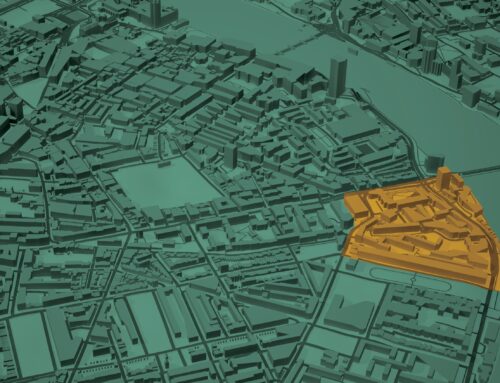By Rachel Reilly
On February 4, the Economic Innovation Group (EIG) hosted a webinar to discuss leveraging Opportunity Zones (OZ) equity for community development tax credit deals. Guest speakers Ira Weinstein from CohnReznick, Jason Chamlee from Model Group, and Emily Cadik from The Affordable Housing Tax Credit Coalition discussed different community development tax credit programs, projects financed with both OZ equity and community development tax credits, and a recent change to the Low Income Housing Tax Credit (LIHTC) that could make it more viable to support affordable housing with OZ investments.
View presentation slides, a recording of the webinar, and EIG’s key takeaways for more information.
Key Takeaways
At the beginning of the webinar, Rachel Reilly from Aces & Archers provided an overview of new OZ resources and field updates, including:
- Newly published EIG investment profiles.
- Additions to the OZ Activity Map.
- Extended IRS relief for Opportunity Funds and investors affected by the pandemic.
- The latest Opportunity Fund Investment Report from Novogradac.
Reilly then teed up the conversation by providing context on community development finance within OZs, making the key points:
- The same socioeconomic and neighborhood conditions addressed by community development tax credit programs are prevalent in OZs.
- There are a number of projects that have already blended OZ financing with LIHTC, New Markets Tax Credits (NMTC), and Historic Tax Credits (HTC).
Ira Weinstein provided an overview of the LIHTC, NMTC, and HTC, and offered insights on salient points for consideration when utilizing these tax credit programs. Weinstein then reviewed the details of three projects that blended these sources of financing with OZ equity.
- A $30.6 million renovation of three buildings into office, retail, and apartments that leveraged HTC, NMTC, and OZ financing.
- An entertainment and athletic venue that anchors a large scale neighborhood revitalization effort in a severely distressed town in the Southeast that leveraged NMTC and OZ financing.
- A rehabilitation of a historic hospital which sat vacant for a decade into commercial space for arts-oriented not-for-profits and affordable homes for artists that leveraged HTC, NMTC, and OZ financing.
Jason Chamlee discussed the $50 million Willkommen project, located in the Over-the-Rhine neighborhood of Cincinnati, OH. Highlights of the project include:
- Scattered-site project consisting of 20 buildings.
- Construction of four buildings and rehabilitation of 16 historic buildings.
- Property uses will include mixed-income residential and commercial.
- Of the 163 apartments, 42 percent will be affordably priced between 50 – 120 percent of Area Median Income.
- The developer is working with existing tenants to ensure that business is not disrupted during renovation as they create 20,000 square feet of commercial space.
- Main sources of financing:
- Private conventional debt and equity
- OZ equity
- LIHTC, NMTC, and HTC
- Tax Increment Financing
- The Willkommen was closed as four distinct transactions in July 2020, and development is expected to be complete in early 2022.
Chamlee noted that complying with different program requirements for multiple tax credit programs adds complexity to a deal, but figuring out how to layer OZ equity into the capital stack proved valuable as it reduced the cost of capital and provided increased financing flexibility.
Emily Cadik rounded out the discussion by sharing that in December 2020, Congress established a minimum rate for the 4 Percent LIHTC (4 Percent Housing Credit). This change creates predictability in the LIHTC marketplace, will drive additional equity to affordable housing projects, and will make a broader range of affordable housing deals financially feasible. A number of affordable housing developments, such as Parkside at Quarry Yards in Atlanta, GA, and Ox Fibre Apartments in Frederick, MD, have been financed with OZ equity and 4 Percent Housing Credit. Following this change, communities with designated OZs should re-examine opportunities for pairing the 4 Percent Housing Credit with OZ investments as part of local affordable housing strategies.
For more information and to see current OZ activities, visit EIG’s Opportunity Zones page and OZ Activity Map.





